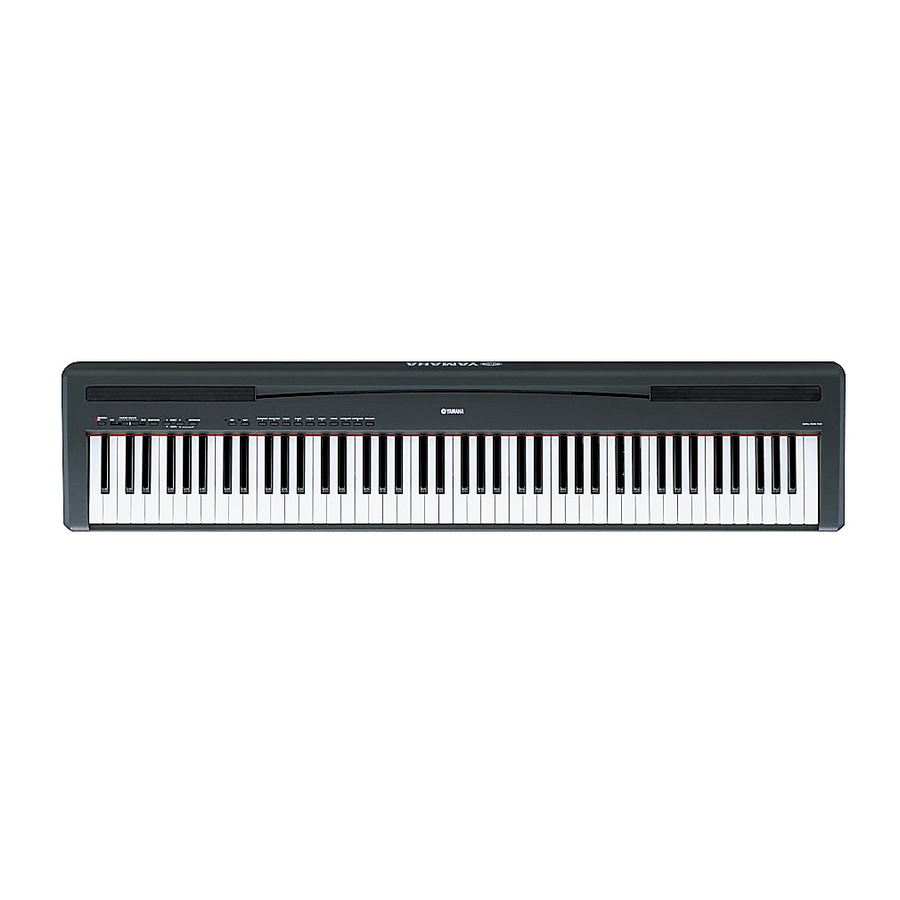Yamaha 85S Owner's Manual - Page 10
Browse online or download pdf Owner's Manual for Musical Instrument Yamaha 85S. Yamaha 85S 38 pages. Yamaha digital piano owner's manual

Panel Controls and Terminals
Panel Controls and Terminals
1
1 [STANDBY/ON] switch ................ page 11
For turning the power on or off.
2 [MASTER VOLUME] slider ........... page 11
For adjusting the volume level of the entire sound.
3 [DEMO/SONG] button .........pages 14, 15
For playing the demo songs and the piano preset
songs.
4 SELECT [
] [
Q Q Q Q
..............................................pages 14, 15
While playing a voice demo or piano preset song,
pressing these buttons lets you select the next or pre-
vious song. These buttons can also be used to change
the song tempo.
5 [METRONOME] button................ page 16
For using the metronome.
6 [REC] button ................................ page 23
For recording your keyboard performance.
7 [PLAY] button .............................. page 24
For playing back the recorded performance.
10
P-85 Owner's Manual
2
3
6
7
9
#
]/TEMPO [
] [
] buttons
W W W W
g g g g
h h h h
4
5
8
)
Shows the
jacks and ter-
minals as
seen when
viewed from
the rear of the
instrument.
8 VOICE buttons .............................page 18
For selecting voices from 10 internal sounds includ-
ing Grand Piano 1 and 2. You can also combine two
voices and use them together.
9 [PEDAL UNIT] jack........................page 12
For connecting an optional pedal unit (LP-5).
) [DC IN 12V] jack...........................page 11
For connecting the power adaptor.
! MIDI [IN] [OUT] terminals ...........page 26
For connecting external MIDI devices, allowing the
use of various MIDI functions.
@ [SUSTAIN] jack .............................page 12
For connecting an included pedal (FC5), optional
FC3 foot pedal or FC4 foot switch.
# [PHONES] jack..............................page 13
For connecting a set of standard stereo headphones,
allowing private practice.
!
@
Shows the
jacks and ter-
minals as
seen when
viewed from
the rear of the
instrument.
